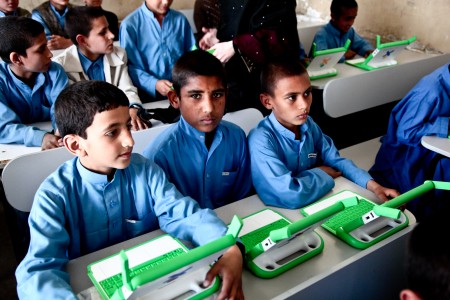Last year, Uruguay published Plan Ceibal, the Book (with Prentice-Hall), describing the world’s first national-scale implementation of one laptop for every child.  This month they released an amazing video looking back on the first four years of the project:  “Much more than a computer“.
The 15-minute video ranges from what students work on in school, outside, and at home, and how the teaching community thinks about the classroom now. Â It is shot mainly outside, emphasizing working with nature and laptops as a part of everyday life. Â There is a lot of student work with multimedia in the background. Â And they share the view of this work from Ceibal as institution – what the program means for supporting schools across the country, and what it means for the influence of schools in their communities.
“transformamos un privilegio en un derecho” —Plan Ceibal

